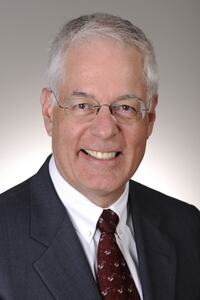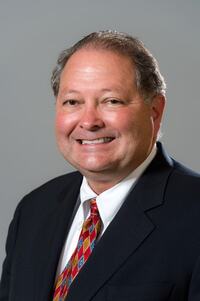 Optimizing the present vs. creating the future: Two sides of single coin?
Optimizing the present vs. creating the future: Two sides of single coin?
One of Bellwether League Foundation's distinguished Hall of Famers coined two curious phrases that can speak volumes about the caliber of healthcare supply chain executive or professional you might consider yourself based on how you define or explain the two phrases.
Leaders & Luminaries posed the curious question of explaining the difference between "optimizing the present" and "creating the future" to award winners and sponsors and supporters. Here's what they shared.
Jim Francis, Bellwether Class of 2017, Chair, Supply Chain Management, Mayo Clinic

"To me both are critically important to the success of a supply chain organization. 'Optimizing the present' speaks to the need to understand current state (benchmarking baseline performance), opportunities for improvement, implementation of improvements, monitoring and sustaining such improvements followed by another cycle of continuous improvement or optimization activities. An example of this type of work would be projects that are implemented in phases. Each phase represents an improvement or optimization of work already completed.
"'Creating the future' can use a similar improvement methodology or be a complete transformation to a future state. Adopting an agile mentality and workforce is an example of a transformation leading to a new future of how the workforce is managed and utilized. Both approaches should be part of any supply chain operation and multiple examples exist in our strategic plan."
George Hersch, Bellwether Class of 2019

"'Optimizing the present' speaks to reducing supply chain costs using data to support contract negotiations and discussions. This is effective in discussions on cost per case and is important in measuring progress the financial impact from new contracts. It is tactical in nature. 'Creating the future' is more visionary. It involves bringing new strategies into supply chain. Examples include inviting physicians to help control the medical supply formulary or inviting vendors help reduce costs through performance improvement efforts that benefit both the vendor and the hospital. Both activities offer a multi-pronged approach to strengthening supply chain."
Siobhan O'Bara, Senior Vice President, Industry Engagement & Services, GS1 US Healthcare, Silver Sustaining Sponsor

"Consumer and patient needs are driving systemic changes in the way that healthcare is delivered today and in the future. The entire healthcare ecosystem is adapting to new realities and demands, a trend that is gaining momentum as new technologies are introduced, regulatory timelines advance, delivery of care evolves and cost controls become increasingly urgent. An organization that functions in the present — addressing the day's problems reactively — is operating in survival mode, succumbing to the tyranny of the present. To be ready for the transformational changes ahead, supply chain professionals (and their entire organizations) need to be looking forward. By focusing on innovation, trying new ideas and taking risks, these people can act as disruptive engineers of the future. It is an exciting time in this industry. The supply chains that can innovate and meet new demands are the ones that will excel in the evolving healthcare system."
Carl Meyer, Bellwether Class of 2019, Executive Vice President, The Wetrich Group

"'Optimizing the present' to me is providing the highest levels of services and support that can be delivered at the moment, given the current structure, staffing and resources available. Whereas 'creating the future' involves defining the future strategic mission for Supply Chain and then building/developing the skill sets and processes to support the future needs of the organization and supports the needs of the physicians, clinicians and staff in delivering ever improving outcomes at ever lower costs per patient."
Tom Lubotsky, Bellwether Class of 2022, Senior Vice President, Supply Chain, Allina Health

"Supply Chain is a set of workflows addressing the end-to-end creation of products\services and their eventual use and payment. Optimizing these array of process improvements whether it be procure-to-pay, manufacturer delivery or contract development are just a few of the many sub processes that make up a supply chain today. Continued focus on the efficiencies and effectiveness of these sub processes is a tireless ongoing set of work among our supply chain professionals today. Ensuring that an environment within supply chain that centers on a culture of improvement and collaboration among the various stakeholders and customers is imperative. Setting a course that prioritizes these set of improvements including the deployment of lean principles is required so that all involved clearly engage and see the "end game" of an optimal end to end supply chain.
"Creating the future of supply chain excellence begins by establishing itself as a strategic asset within the healthcare setting among the C-suite today. Beyond product acquisition, delivery reliability, procure-to-pay efficiencies and sourcing excellence, supply chain needs to address technical advancements (e.g., digitalization), new channels of products\service delivery (i.e., home), commercialization opportunities and supplier associated value beyond the transactional relationships. Creating a future that taps into trading partner development that aligns more closely to the evolving value base care model and payment environment today will be essential. This will require new thinking that endorses a constellation of supplier relationships that go beyond the traditional operating model and grabs the full set of resources and expertise to address the full continuum of care challenges facing our industry today."
Rand Ballard, Chief Customer Officer, Vizient Inc., Founding Sustaining Sponsor

"'Optimizing the present' is doing the best you can do every day to create value for your internal constituents. 'Creating the future' is truly being an integral part of the clinically integrated supply chain as the supply chain can affect quality and strategy in a very big way. Creating the future also means recognizing that innovation can disintermediate certain needs for traditional products, if new products/systems result in better quality and lower the total healthcare continuum costs."
Shaun Clinton, Senior Vice President, Supply Chain, Texas Health Resources, Bronze Sustaining Sponsor

"'Optimizing the present' means that we are prepared to meet the organization where it is right now. For me, that has meant aligning my team in such a way that the enterprise can have very direct line of sight to the various channels we serve — hospital, ambulatory, physician, etc. 'Creating the future' is simply about finding a way to succinctly explain to senior leadership where we fit in the strategic plan and what it will take for us to be most successful in that vision. Our focus on the consumer has meant that I have had to work closely with our Experience teams to explain aspects of a product lifecycle, how to build solutions from disparate sources, and how we should build risk sharing into new and novel contracting approaches."
Dee Donatelli, Bellwether Class of 2015, Leader, Spend Management, symplr, and Principal, Dee Donatelli Consulting LLC

"Optimizing the present — achieving excellence in all of the logistics of supply chain management.
"Creating the future — having the vision to strategically position and garner greater accountability and respect among clinical and executive leadership."